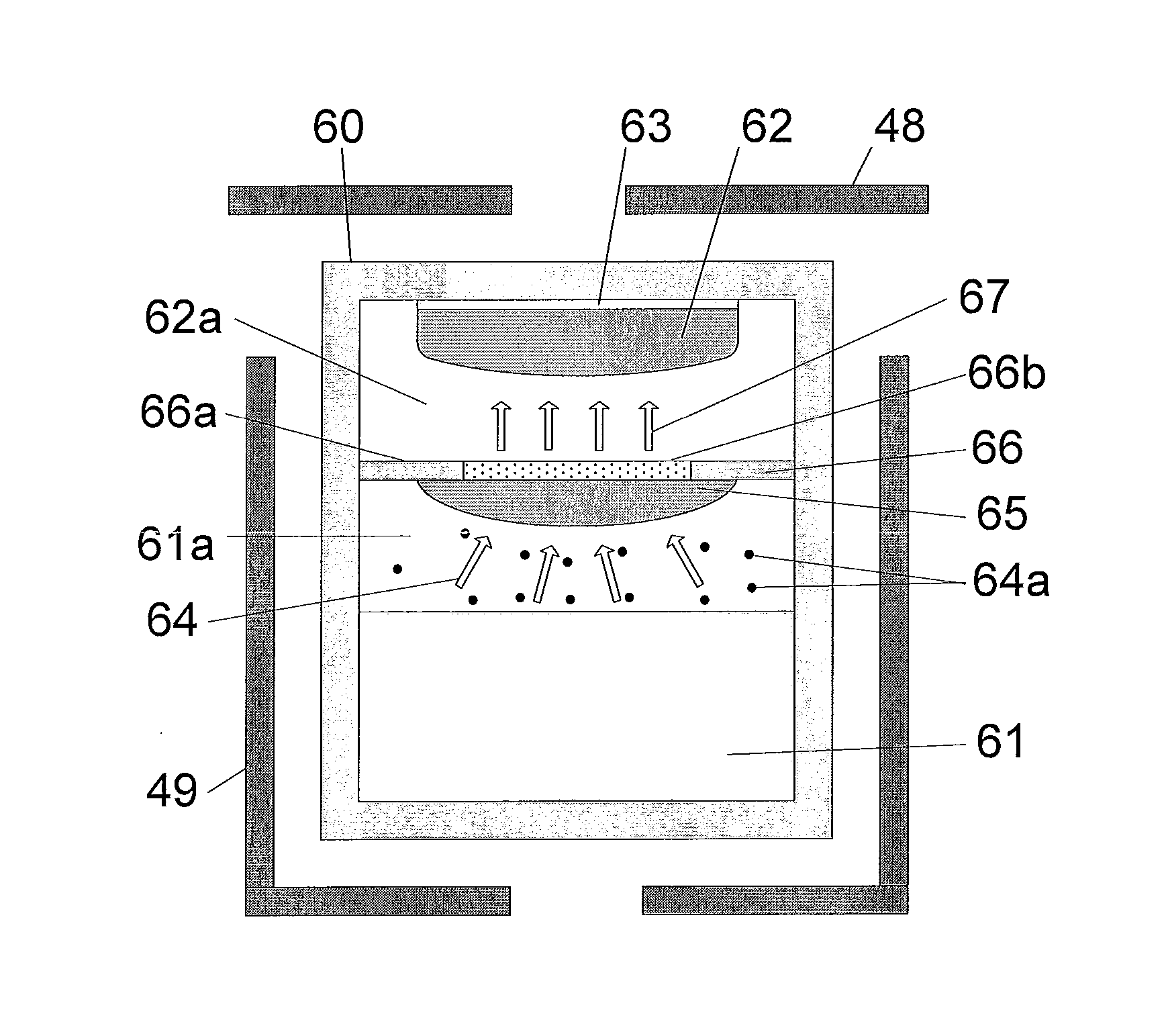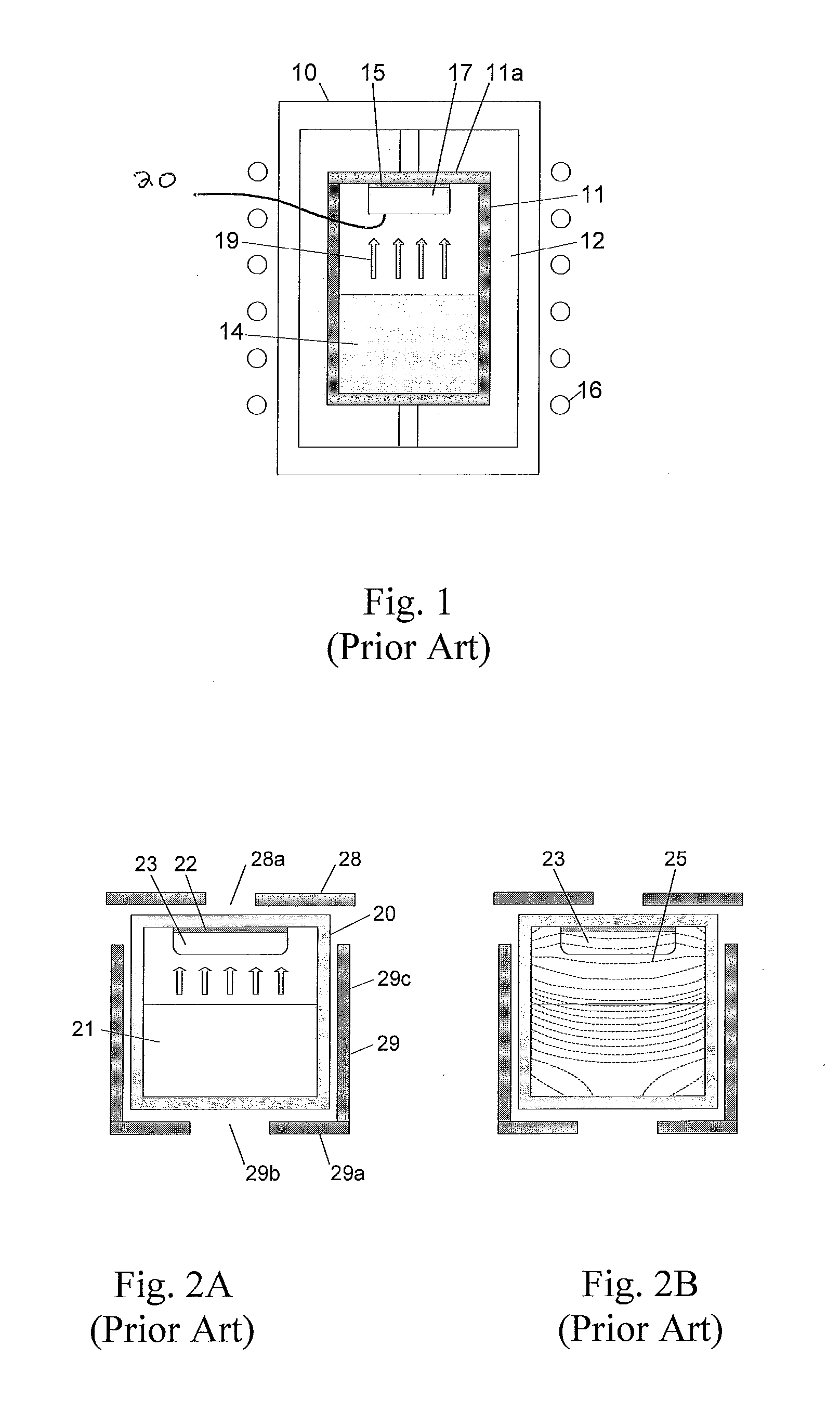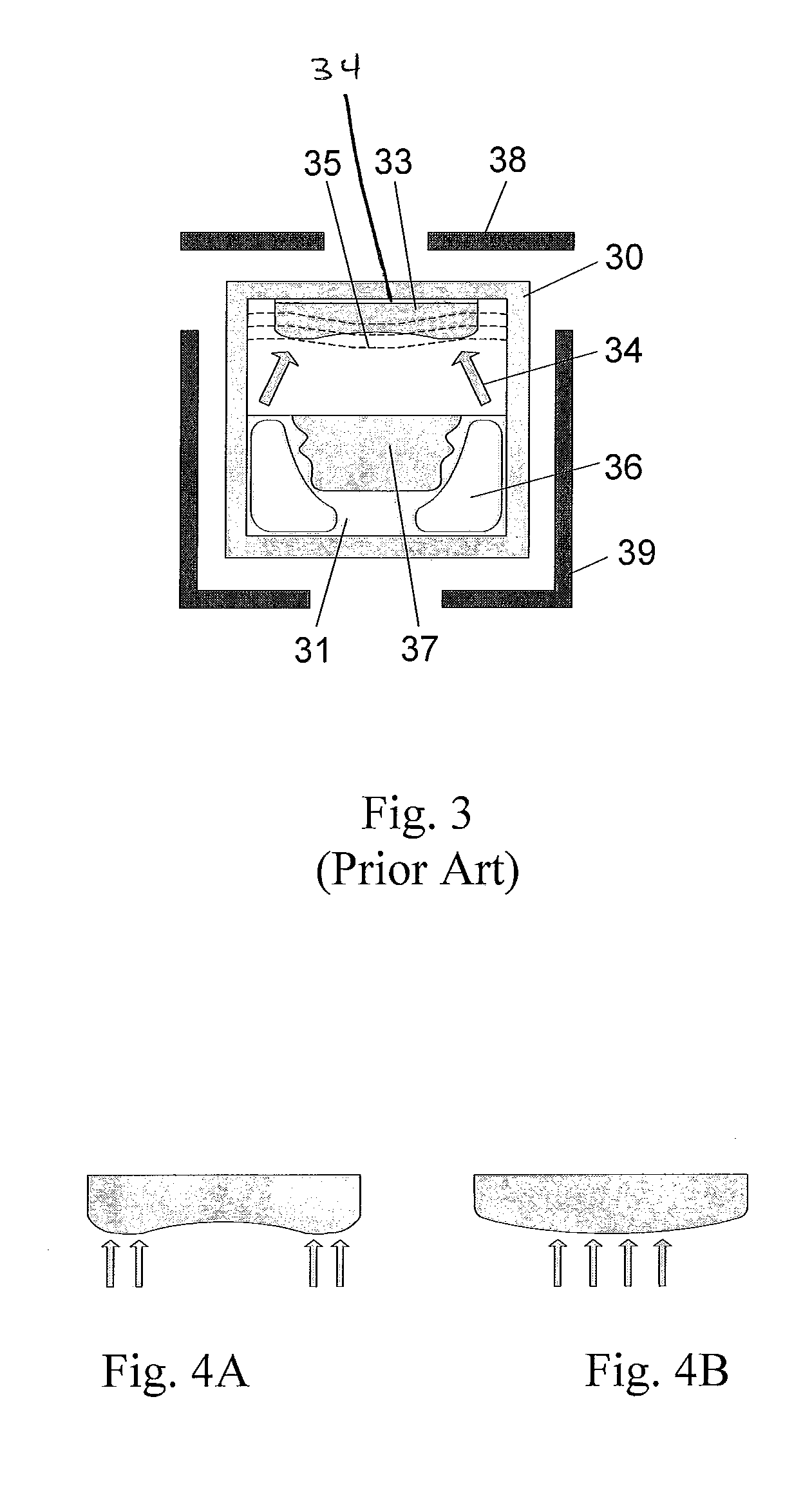Large Diameter, High Quality SiC Single Crystals, Method and Apparatus
a silicon carbide and single crystal technology, applied in the direction of polycrystalline material growth, manufacturing tools, transportation and packaging, etc., can solve the problems of affecting the progress of sic-based devices, and affecting the stability of sic-based devices
- Summary
- Abstract
- Description
- Claims
- Application Information
AI Technical Summary
Benefits of technology
Problems solved by technology
Method used
Image
Examples
first embodiment
[0126]The principle of invention is illustrated in FIG. 5. In similarity to conventional SiC sublimation growth, cylindrical crucible 50 includes SiC seed crystal 53 disposed at the top and SiC source material 51 disposed at the bottom. The vapor flux is controlled by a plate 56 disposed in the crucible 50 in the space between the source 51 and seed crystal 53. The chemically inert separation plate 56 is impervious to the vapors 54 and has a central opening 56a. In operation, source 51 vaporizes and generates vapors 54, that migrate toward the seed 53. The opening 56a in plate 56 restricts the vapor flux by forming a vapor column 57. The vapor in column 57 migrates toward the SiC seed crystals 53 and reaches said seed substantially at the central area of the seed 53. This geometry of vapor flux creates a tendency toward convex growth interface. The remaining elements comprising a SiC sublimation growth cell (e.g., FIG. 1) that includes crucible 50 have been omitted from FIG. 5 for s...
second embodiment
[0127]With reference to FIG. 6, a cylindrical crucible 60 is prepared of dense, fine-grain graphite, such as grade 2020 available from Mersen USA Bay City-MI Corp. 900 Harrison Street, Bay City, Mich. 48708, grade IG-11 available from Toyo Tanso USA, Inc. 2575 NW Graham Circle, Troutdale, Oreg. 97060, or similar, without limitation. Crucible 60 is loaded at the bottom with SiC source material 61, e.g., as-synthesized polycrystalline SiC grain with a particle size, desirably, between 0.1 and 2 mm. A SiC seed crystal 63 is disposed at the top of crucible 60.
[0128]FIG. 6 shows a non-limiting embodiment of the invention, wherein crucible 60 is loaded at the bottom with SiC source material 61. It is envisioned, however, that SiC source material 61 can be disposed alternatively in crucible 60, such as, without limitation, spaced at a distance from the bottom of crucible 60 or at a distance from the walls of crucible 60.
[0129]A separation plate 66 is prepared, which is chemically inert to ...
PUM
| Property | Measurement | Unit |
|---|---|---|
| thickness | aaaaa | aaaaa |
| thickness | aaaaa | aaaaa |
| area | aaaaa | aaaaa |
Abstract
Description
Claims
Application Information
 Login to View More
Login to View More - R&D
- Intellectual Property
- Life Sciences
- Materials
- Tech Scout
- Unparalleled Data Quality
- Higher Quality Content
- 60% Fewer Hallucinations
Browse by: Latest US Patents, China's latest patents, Technical Efficacy Thesaurus, Application Domain, Technology Topic, Popular Technical Reports.
© 2025 PatSnap. All rights reserved.Legal|Privacy policy|Modern Slavery Act Transparency Statement|Sitemap|About US| Contact US: help@patsnap.com



